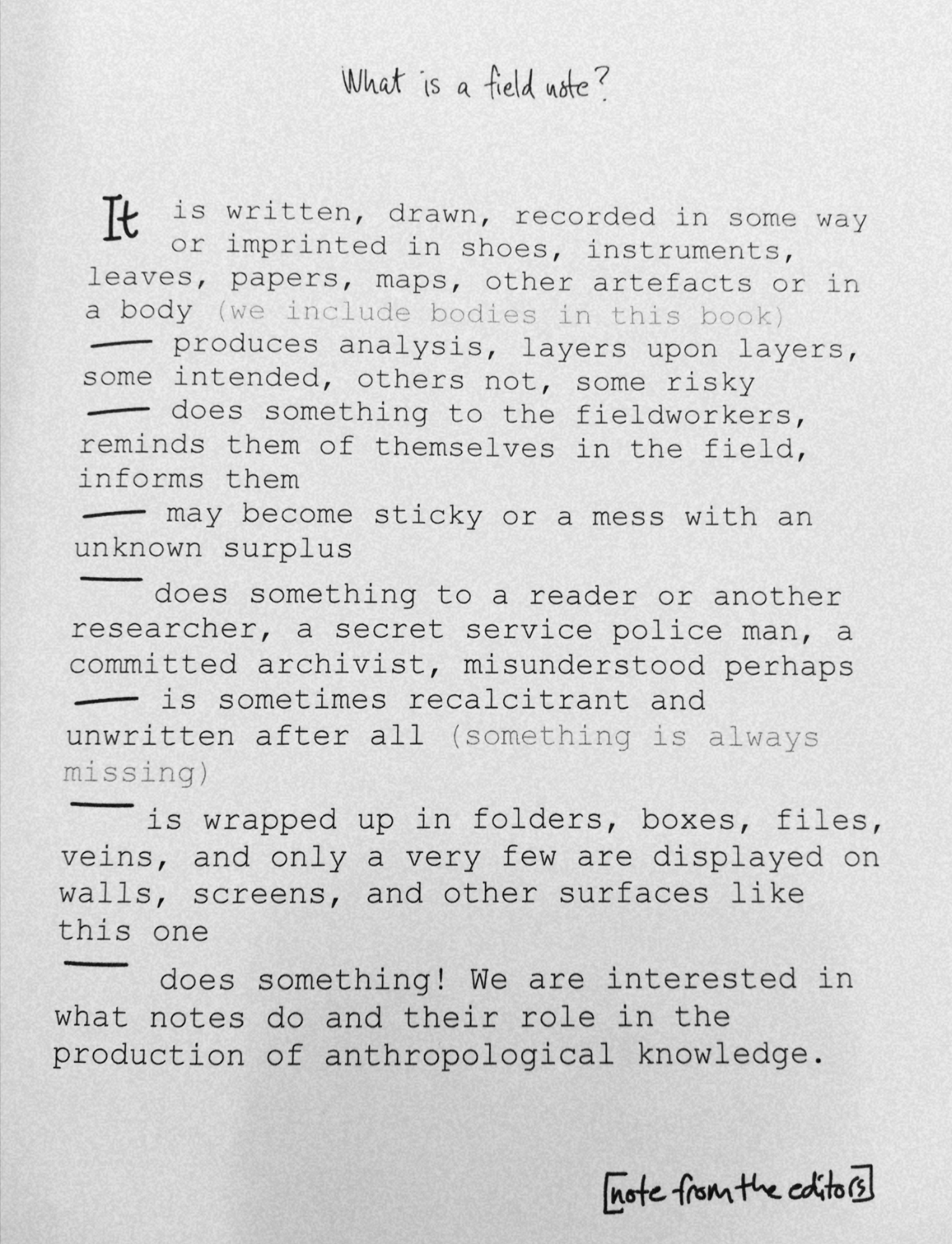Field Diary and Field Notes
In ethnographic research, taking notes is part of the work process. When going out into the field, whether that field is at a physically distant location or “near home”, ethnographers observe, reflect, participate and influence the fragments of the researched reality that they record in different ways and in different media. A field diary is one of the methodological tools for such recording, more precisely, for recording our experience and presence in the field which often, like other field, text or other notes, remains invisible to readers of published papers.
The boundaries between individual ways of recording or types of field notes are not firm and unequivocal (cf., e.g., Sanjek 1990), so, for example, someone will refer to something as a field diary, while others would refer to that same thing as field notes; someone will refer to all of their notes from the field as field notes or a field diary, and others will clearly separate one from the other. For instance, one may differentiate more extensive and reflective descriptions and observations written down at the end of a day spent in the field from short observations, bullets, keywords, etc. taken from conversations or even interviews written in the moment or shortly thereafter. In addition, while some researchers consider field notes to be textual records on paper, in a notebook or computer, and use them as the primary way of recording fieldwork, others tend to primarily take photos, record video or sound, draw, sketch or collect objects (cf., e.g., Andersen et al. 2020), which can also, in a broader sense, be covered by the term field notes or field diary. Although field notes can be published independently, in integral form or inserted into academic texts, they are still primarily sketches, reminders, templates, sources for writing academic papers, texts that are not intended for publication (e.g. Malinowski’s diary) and researchers write them for themselves or they may share them with colleagues.
As in other ethnographic research contexts, writing a field diary or field notes is an indispensable part of fieldwork in researching illegal migration, of course, with certain particularities, such as a more pronounced fear of losing such notes due to potential “very tangible existential repercussions for all those involved” related to the “securitarian and repressive framework of migration management”, as discussed in the paper written in the context of research into the Balkan corridor (Hameršak and Pleše 2018: 137). The same context yielded a paper that uses field notes as an autoethnographic testimony of a personal experience of research volunteering in a refugee camp, but also as a “contribution to the practice of thick description” of one of the central points of that camp (Jambrešić Kirin and Škokić 2018: 94). Azra Hromadžić’s text (2020), published as a contribution to an issue of the movements magazine and dealing with the border regime in the Balkans, is an example of publishing field notes on the so-called migrant crisis in Bihać (Bosnia and Herzegovina). In her text, Hromadžić combines photographs and ethnographic descriptions (places, situations, observations and conversations) with anthropological literature and analytical reflections. She uses the term “notes” to refer to field notes about Bihać, to the associative expression of impressions related to the events surrounding the researcher of which she is a part of.
As part of ERIM’s field research, collaborators keep field diaries and notes, whose fragments are presented here, both in their original or almost original form, without any emphasized analytical interpretation (cf. party), and along with their contextualization and interpretation, as a kind of supplement to the primary text of an entry (cf. Šid).
10/3/2022
Literature
Andersen, Astrid Oberborbeck, Anne Line Dalsgård, Mette Lind Kusk, Maria Nielsen, Cecilie Rubow and Mikkel Rytter, eds. 2020. Anthropology Inside Out. Fieldworkers Taking Notes. Canon Pyon: Sean Kingston Publishing.
Hameršak, Marijana and Iva Pleše. 2018. "Winter Reception and Transit Center in the Republic of Croatia. An Ethnographic Research in the Slavonski Brod Refugee Camp. In Formation and Disintegration of the Balkan Refugee Corridor. Camps, Routes and Borders in Croatian Context. Emina Bužinkić i Marijana Hameršak, eds. Zagreb, Munchen: Institut za etnologiju i folkloristiku, Centar za mirovne studije, Fakultet političkih znanosti - CEDIM, bordermonitoring.eu e.V., 2018. str. 109-142.
Hromadžić, Azra. 2020. "Notes from the Field. 'Migrant Crisis' in Bihać, Bosnia and Herzegovina". movements. Journal for Critical Migration and Border Regime Studies 5/1: 163-180.
Sanjek, Roger, ed. 1990. Fieldnotes. The Makings of Anthropology. Ithaca, London: Cornell University Press.
Škokić, Tea and Renata Jambrešić Kirin. 2017. "The Shopping Center of Abnormal Normality. Ethnography of the Distribution Tent in the Refugee Camp in Slavonski Brod". Narodna umjetnost 54/1: 129-146.1
